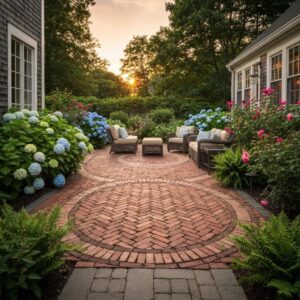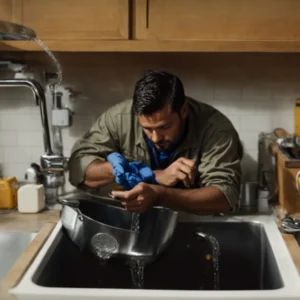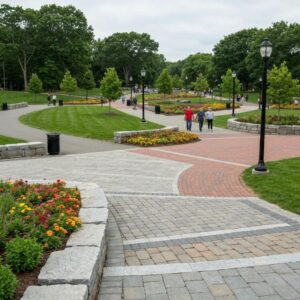Sound and Space: How Music Shapes Modern Interior Design
Introduction
Whether it’s the pulse of a low-fi beat in a cozy studio apartment or the melodic ambiance of classical strings echoing through a minimalist loft, music does more than play in the background of our lives—it sets the tone for the spaces we inhabit. As personal expression becomes central to design, the influence of musical taste on interior style has grown unmistakably profound. More than a soundtrack, music now informs spatial choices, aesthetic direction, and even the emotional purpose of rooms.
Across cities and genres, design and sound are merging into something deeply personal: homes that not only reflect who we are visually, but how we listen, feel, and live.
The Emotional Blueprint of Music-Inspired Interiors
Music has the unique power to shape mood, which makes it a natural muse for interior designers. Just as a playlist can energize a workout or soothe a restless night, the visual cues drawn from music genres can guide a room’s entire ambiance.
Take jazz, for instance—its smooth tones and layered harmonies often inspire warm wood finishes, rich textiles, and intimate lighting. A rock-and-roll aesthetic leans toward vintage leather, industrial elements, and bold art. For lovers of electronic and techno, interiors may adopt clean lines, modular furniture, and ambient lighting to mirror the genre’s futuristic vibe.
This emotional mapping of sound to space creates environments that feel not only beautiful but in tune with the homeowner’s lifestyle and creative identity.
Acoustics and Aesthetics: Designing with Sound in Mind
Beyond inspiration, music presents a technical challenge in residential design: acoustics. Rooms designed for serious listening or music-making need to account for how sound moves through space. Hard surfaces like glass or concrete reflect sound, while textiles, curtains, and carpets absorb it.
Architects and interior designers are increasingly incorporating acoustic panels disguised as artwork, or using bookcases and irregular wall features to diffuse sound waves. For audiophiles, even the placement of furniture can affect the clarity of a track.
Meanwhile, integrating home audio systems—whether it’s hidden surround sound or a visible wall of speakers—requires careful planning. Designers now collaborate with sound engineers to ensure that high-fidelity doesn’t mean high-visibility unless intentionally so.
The Vinyl Revival and Analog-Inspired Spaces
The return of vinyl isn’t just a musical trend—it’s an aesthetic one. Record collecting has reintroduced a tactile, analog charm into the home that’s influencing everything from shelving to seating.
Dedicated spaces for turntables, built-in record cabinets, and vintage speaker stands are now a priority in modern design plans. These features blend function with nostalgia, turning music collections into visual centerpieces.
The visual appeal of mid-century modern furniture, which pairs beautifully with analog equipment, has seen a resurgence partly because of its compatibility with music-focused decor. These pieces bridge the gap between audio fidelity and interior design, serving as both sonic and style icons.
Lifestyle Meets Listening: Customization Through Design
As people spend more time curating their homes as personal sanctuaries, music-centric spaces are evolving beyond traditional living rooms. Homeowners are commissioning sound lounges, meditation rooms with integrated sound therapy, and even multifunctional spaces that serve as both music studios and relaxation areas.
Designers respond with modular furniture, acoustic-friendly layouts, and customizable lighting that enhances mood and music. Velvet armchairs that absorb echo, low-profile tables that double as media storage, and soundproof glass doors are a few examples of how design adapts to the audiophile lifestyle.
In high-design areas, it’s common for people to search for unique decor solutions and sourcing options, sometimes exploring places like a luxury furniture store agoura hills to find pieces that reflect their musical and visual taste.
Collaborations Between Musicians and Designers
The relationship between music and design is not one-sided. Musicians themselves are increasingly getting involved in furniture and decor design, collaborating with visual artists or launching homeware collections. These collaborations often reflect the stage aesthetic or personal style of the artist, translating their sound into tangible items.
From studio-inspired chairs to lighting fixtures influenced by album art, these pieces blur the line between merchandising and artistry. For fans, they offer a way to live inside the aesthetic world of their favorite musicians.
Interior designers are also drawing inspiration from concert venues and tour visuals, using elements like projection mapping or reactive lighting to create immersive home experiences that echo the thrill of live music.
Designing for Creativity and Calm
Sound doesn’t just entertain—it heals, focuses, and calms. This is leading to an increased interest in sensory design, where auditory elements are considered alongside visuals, textures, and even scent. Ambient sound machines, integrated speaker systems, and mood-based playlists are now part of the design brief for wellness-oriented spaces.
Meditation rooms, yoga corners, and reading nooks are being designed with acoustics in mind, using soft materials and soundscapes to enhance mental clarity. In this way, music becomes a tool for wellness, seamlessly embedded into the architecture of the home.
Conclusion
The interplay between sound and space is no longer niche—it’s a defining element of how we live and express ourselves through design. As music continues to shape cultural identity, its influence on interior environments will only deepen. The future of home design lies not just in how things look, but how they feel and sound, harmonizing the visual with the auditory to create spaces that are not only seen and touched, but truly heard.






